

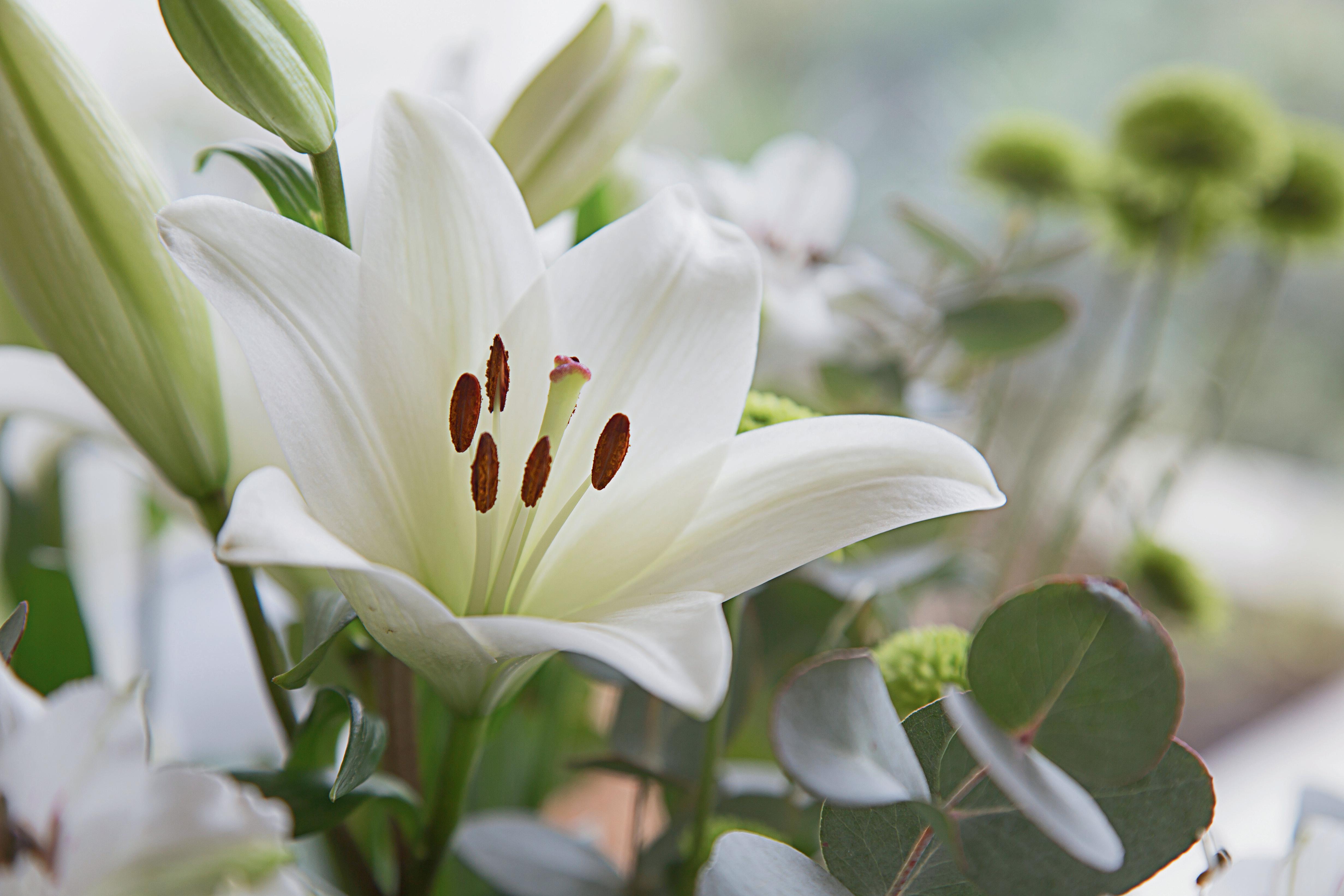
Christ said: “Consider the lilies of the field, how they grow: they labour not, neither do they spin. But I say to you, that not even Solomon in all his glory was arrayed as one of these.”
(Matt.6:28-29) .

 By Seasons & Significances
By Seasons & Significances
Flowers for Special Occasions 8-27 28-33 34-44
Symbols Behind Different Flowers
TABLE OF CONTENTS
Guidelines & Rules

THE MEANING AND THE RULES OF THE FLOWERS IN THE LITURGY

Flowers are meant to be an integral part of the liturgy. The Liturgy needs the language of flowers because they complement the immobility of the architecture and church furnishings with their ability to appropriately represent different feast days and the changing cycle of seasons both in nature and the liturgy.
Flowers are one of God’s, loveliest creation, and there are frequent references to them in Scripture alluding to their beauty. Christ said: “Consider the lilies of the field, how they grow: they labour not, neither do they spin. But I say to you, that not even Solomon in all his glory was arrayed as one of these.” (Matt.6:28-29)
Ecclesiastical legislation governs the use of floral arrangements during feast and liturgical seasons. Throughout history, certain flowers have been used to serve as a reminder of Christ's crucifixion and resurrection. In addition, several aspects of various flowers, such as color and shape, are used to represent Christ's love and purity.


WHEN THE TRUE PURPOSE OF FLORAL ARRANGEMENTS IS MISUNDERSTOOD
...churches run the risk either of being bereft of any gift of nature presented in homage to Christ or of being turned into a greenhouse “obstacle course” with pots and plants placed in every available space.


BASIC GUIDELINE:
The flowers must not ignore or detract from the symbolic and theological meaning of sacred spaces, and they should highlight, not hide the altar, the ambo, and the baptismal font.
The altar — the table of the Lord — is Christ; the ambo — from where the word of God is proclaimed — is the visible image of Christ resurrected; and the baptismal font is where God’s children are welcomed into the Church.
The need to focus on Christ and his sacrifice means only those elements necessary for the eucharistic celebration should be on the altar, which means flowers should be placed near or next to the altar, never on top.
Potted plants with roots should never be used near the altar — only cut flowers to represent life “that is sacrificed,” like the sacrifice of the Eucharist. That it is also why no artificial flowers or fake candles should ever be used because objects near the altar must always be things that “are consumed,” depleted and fade away.
The use of flowers also should reflect the hierarchy of what is most important in the church; for example, “it is not right if there are more flowers adorning the statue of the patron saint than the altar.”
Often simplicity is what makes a composition more beautiful. The aim, is to create a space where a person of faith or a visitor walks into church “and says, ‘How beautiful it is to be here.’ It has to feel welcoming and flowers help do that
NOTE: above text is adopted from the teaching of Micaela Soranzo, a professor and expert in liturgy and religious architecture.
RULES
The noble simplicity that the Church intends in the Roman Rite is meant to eliminate any superfluous elements that can become distractions from the centrality of the Eucharistic Sacrifice.
Because the Roman Rite is marked by noble simplicity the General Instruction of the Roman Missal, the legal document that governs the Mass for the Roman Rite, makes clear that this noble simplicity is to be reflected in the decorations within a church of the Roman Rite. “Church décor should contribute to the church’s noble simplicity rather than ostentation” (GIRM n.292)
This applies to all aspects of church décor, including flowers. “Floral decorations should always be done with moderation and placed around the altar rather than on its mensa [altar]” (GIRM n.305). The next paragraph of the GIRM makes explicit that only those things which are necessary for the celebration for the Mass may be placed on the altar. Since flowers are not necessary, they are not to be placed on the altar.
Flowers are also forbidden to be used to decorate around the altar during the season of Lent. Solemnities and feast days that occur during Lent, as well as Laetare Sunday, allow for the use of flowers to decorate around the altar. This is because, as a general rule, decoration should always be marked by “moderation suited to the character of the season” (GIRM n.305)
All ornamentation and decoration present in churches are to be used only in so far as they lead those present into a deeper encounter with our Lord in the Eucharistic Sacrifice. If they become sources of distraction or draw attention away from the centrality of the Mass, then they are not to be used.
Floral arrangements should never block the altar or become obstacles to the normal celebration of the Mass (GIRM n.295).
General Instruction of the Roman Missal seems to assume that any flowers that are used to decorate the sanctuary are living, though this is not explicitly stated. Built of Living Stones states that “The use of living flowers and plants, rather than artificial greens, serves as a reminder of the gift of life God has given to the human community” (Built of Living Stones. §129). Living flowers are the clear preference of the church and all reasonable effort should be made to make use of them instead of artificial flower


CHRISTMAS
There is a beautiful symbolism in the traditional Christmas tree. The tree represents the long period of waiting for the coming of the Christ, Who is represented by a star or some other shining ornament at the top of the tree. The ornaments, candles and lights represent His gifts and graces to us.
Red and green are the colors most used at Christmas time. In the tradition of the church, these colors have special meaning.
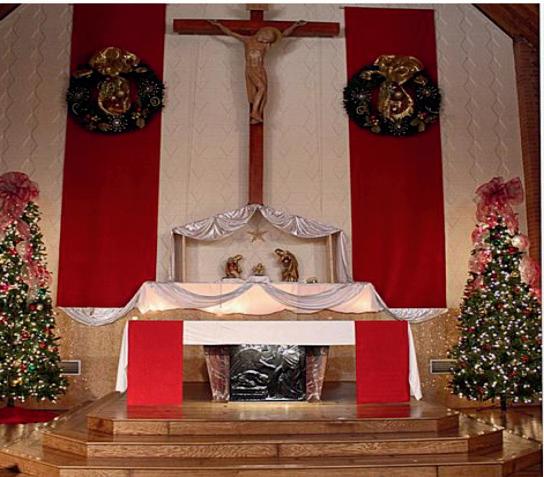

Red symbolizes, the blood of Christ offered in sacrifice for our sins. Green is the colour of hope and has always been a sign of life and growth in nature.
Modest and dignified decoration for Christmas

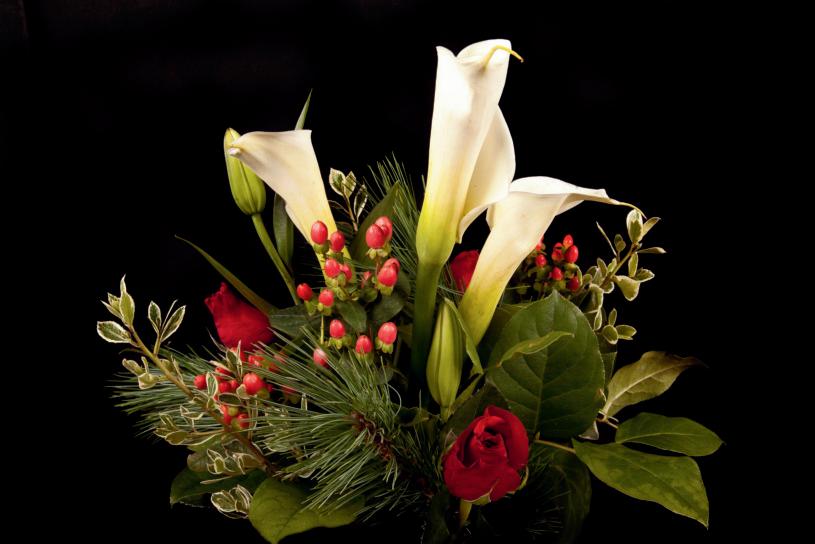
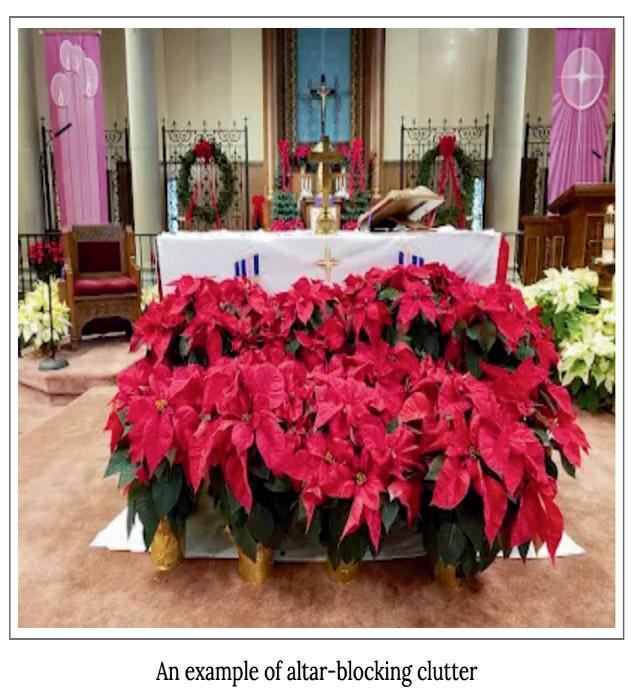
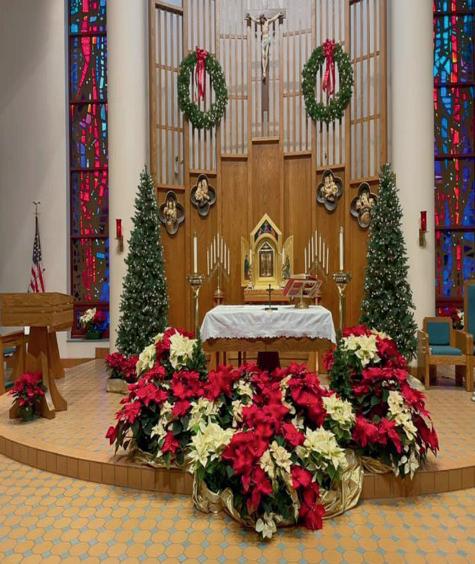

INAPPROPRIATE USE OF FLORAL DECORATION
CLUTTER



EASTER LENT
Using flowers is absolutely forbidden during the solemn season of Lent



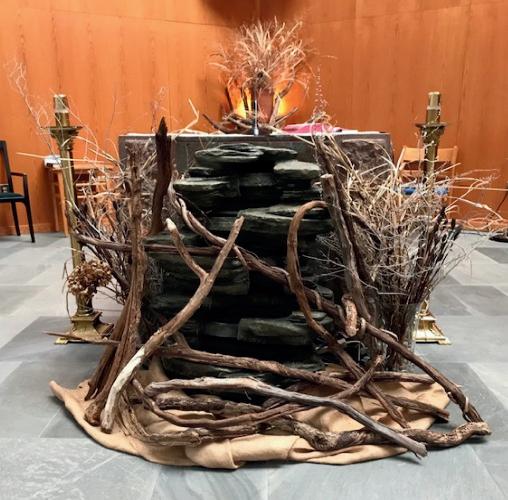
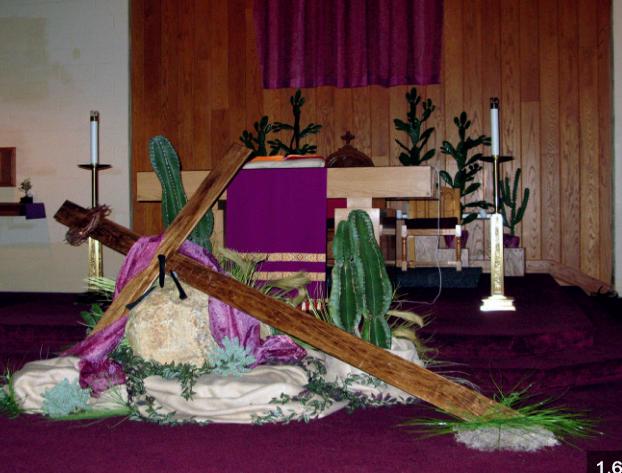
CLUTTER INAPPROPRIATE USE OF FLORAL DECORATION
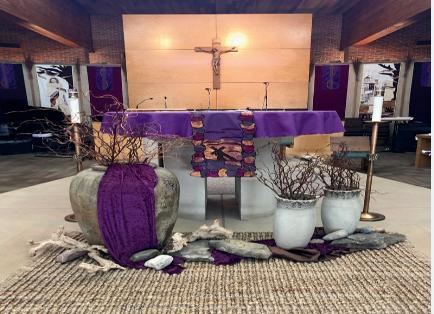


PALM SUNDAY
This week, we gather to walk hand in hand in company with Jesus, from His triumphant entry to Jerusalem to His death on Good Friday—and beyond, to His Resurrection—the Jesus Who took upon Himself all the consequences of humanity’s disobedience.


MODEST AND DIGNIFIED DECORATION



INAPPROPRIATE USE OF FLORAL DECORATION
CLUTTER


EASTER RESURRECTION
The flowers symbolize the new hope, new life, light, and new beginnings, which means the predominate colors should be yellow and white.
All the other colored blossoms and plants are there “to give the idea of a garden, the garden of the Resurrection. Easter lilies and Madonna lilies symbolize virtue, innocence, hope and life, while commemorating the resurrection of Christ and the hope of eternal life in heaven.
For the Catholic Church, those sprigs, sprays, and bouquets adorning church interiors are meant to bring deeper meaning and attention to the liturgy and the key elements inside each place of worship.



MODEST AND DIGNIFIED DECORATION FOR EASTER



INAPPROPRIATE USE OF FLORAL DECORATION
CLUTTER

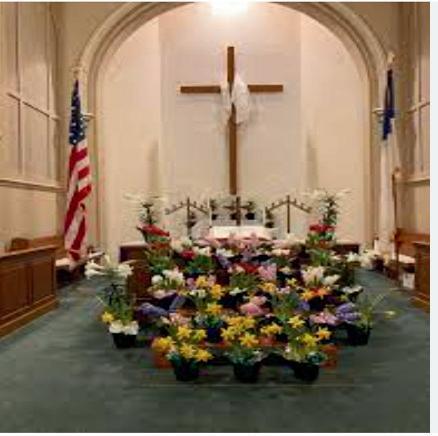

A bouquet of white flowers for the Feast of the Annunciation and other feasts of Mary are appropriate because they remind us of Our Lady’s holiness and purity. (Little blue ribbons tied on white carnations with baby’s breath and greens make an attractive bouquet for the Feasts of the Immaculate Conception, Miraculous Medal, and Our Lady of Lourdes)




MAY / JUNE — PENTECOST
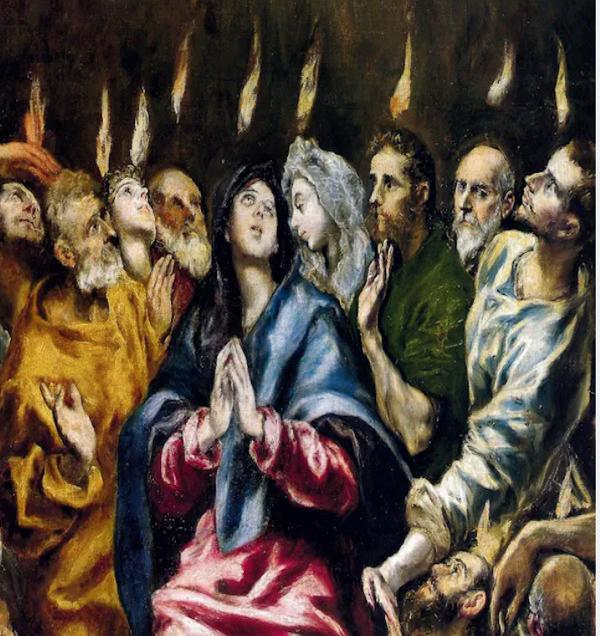

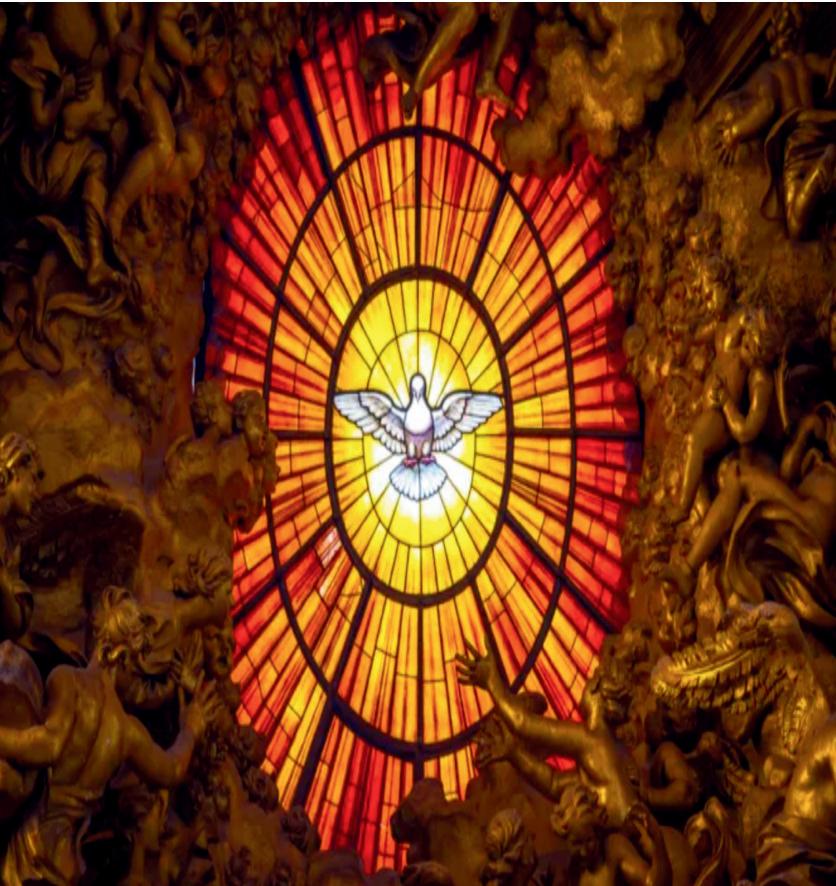
Red color is for Pentecost Sunday, representing tongues of fire. Pentecost takes place on the seventh Sunday (50th day) after Easter. It follows the Ascension where Jesus ascended into heaven and was no longer physically present with his disciples. Green is used during Epiphany and the “Ordinary Time” after Pentecost




INAPPROPRIATE USE OF FLORAL DECORATION (POTTED FLOWERS ARE NOT NECESSARY IN THIS DISPLAY)

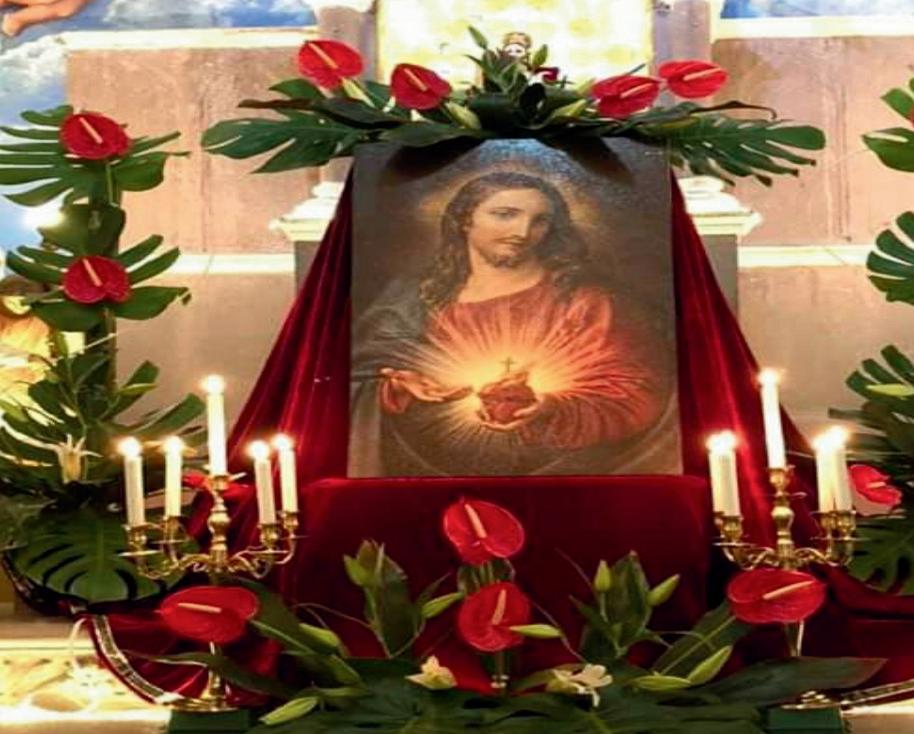
JUNE - FEAST OF CORPUS CHRISTI
Feast of Corpus Christi, the in honor of real presence of the body (corpus) of Jesus Christ in the Eucharist.



INAPPROPRIATE USE OF FLORAL DECORATION AS IT COVERS THE BODY OF CHRIST
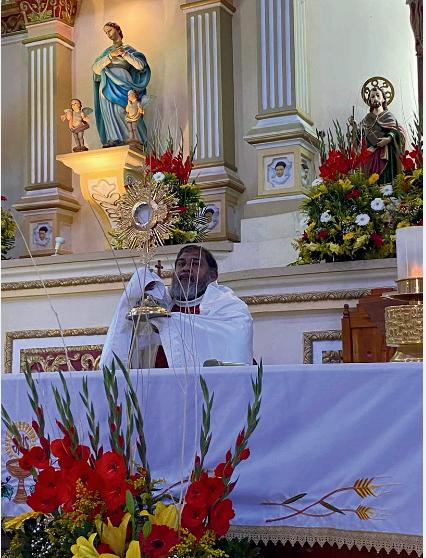

JUNE — THE FEAST OF THE MOST SACRET HEART OF JESUS
In 1856, the Feast of the Sacred Heart became a universal feast. St. John Paul II, a great devotee of the Sacred Heart, said, “This feast reminds us of the mystery of the love of God for the people of all times.”


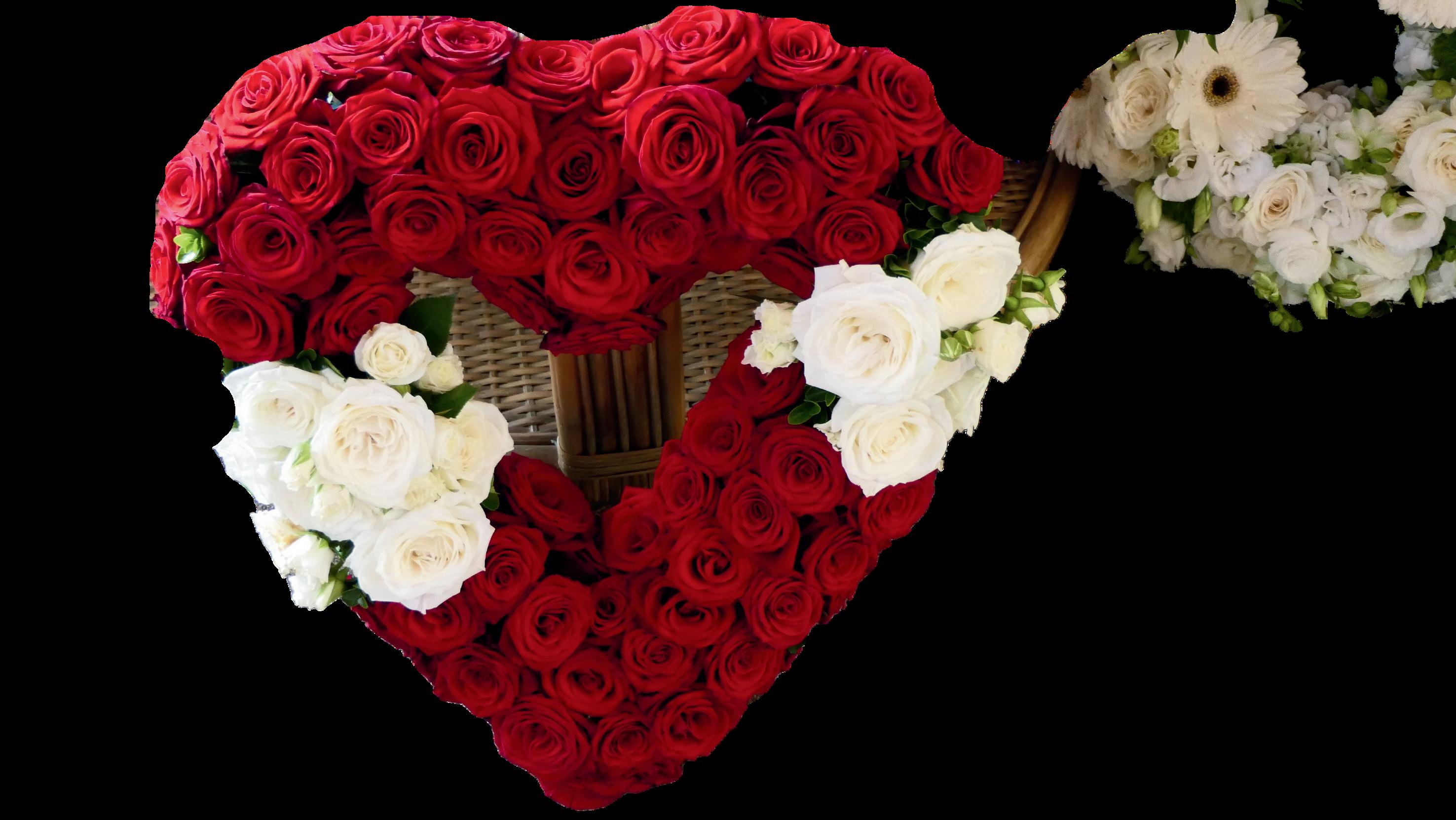

JULY — THE FEAST OF THE PRECIOUS BLOOD OF JESUS
Red is proper for the month of July and the Feast of the Precious Blood in particular. It reminds us of the price paid by Our Lord for opening the gates of Heaven for us.
Devotion to the Most Precious Blood of Jesus is as old as Christianity. The early Fathers say that the Church was born from the pierced side of Christ, and that the sacraments were brought forth through His Blood.
Just as Eve, the mother of all life, whose name means Life, was taken from the side of Adam, the Church and all the life-giving sacraments flow from the pierced side of Jesus.
In the first century, Pope St. Clement I wrote “Let us fix our gaze on the Blood of Christ and realize how truly precious it is; it was poured out for our salvation and brought the grace of conversion to the whole world.”


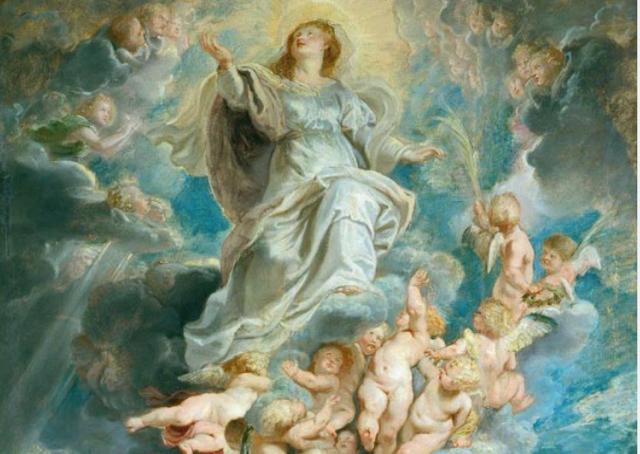
AUGUST —
THE ASSUMPTION
The Assumption (August 15) refers to the Blessed Virgin Mary being assumed — body and soul — into heaven at the end of Her earthly life.



APPROPRIATE FLORAL DECORATION


INAPPROPRIATE USE OF FLORAL DECORATION


White or gold is the color for All Saints Day on November1, November, being the month of the Holy Souls is a good opportunity to remind Catholics of this reality, and one of the more permanent reminders of this are permanent altars dedicated to the Holy Souls.
These altars showing the suffering souls in purgatory and, above, we find the Blessed Virgin interceding on behalf of the souls in purgatory.
NOVEMBER —THE MONTH OF HOLY SOULS




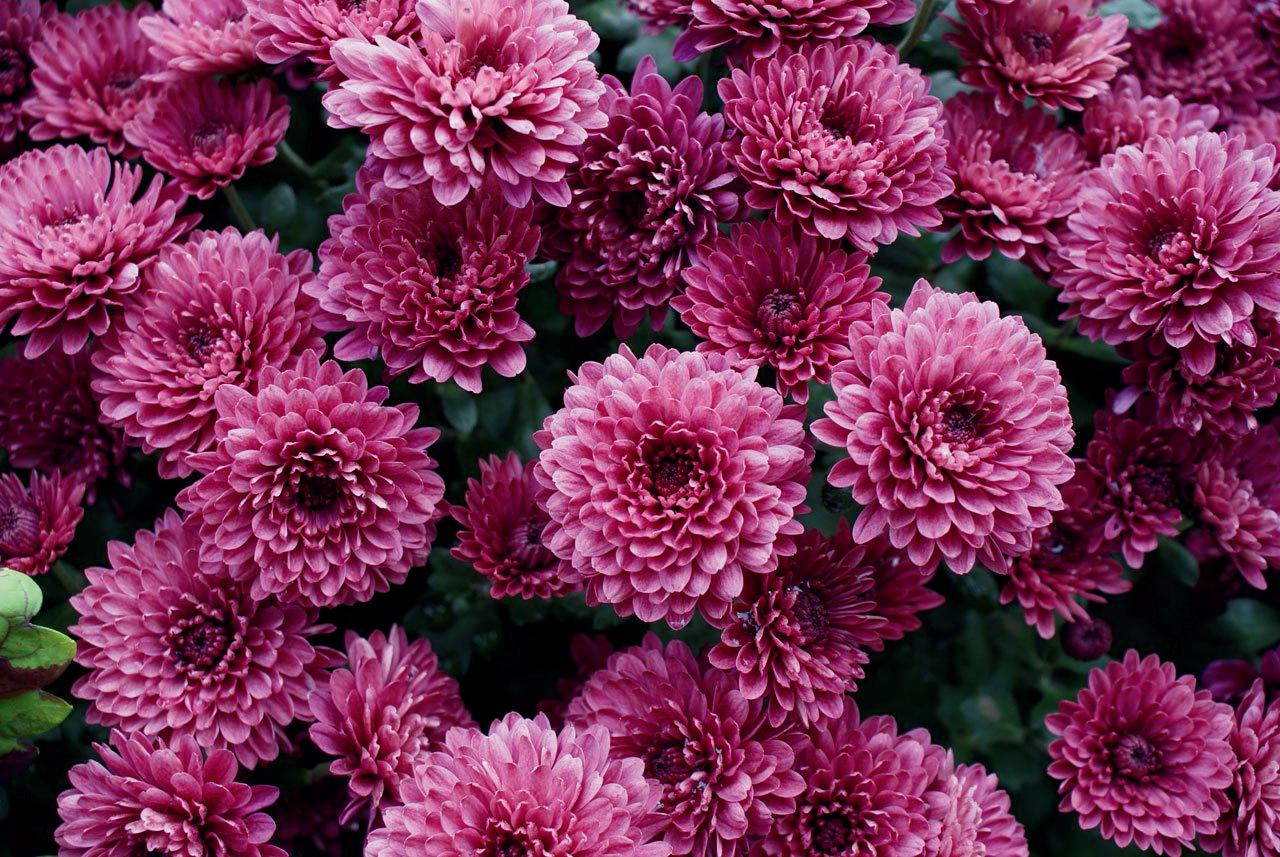




SPECIAL OCCASIONS
FLOWERS FOR MARRIAGE


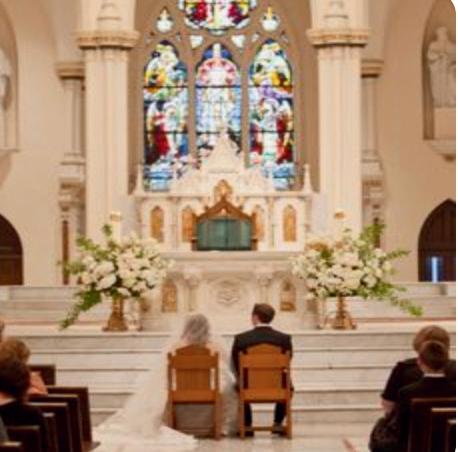
APPROPRIATE USE OF FLORAL DECORATION


INAPPROPRIATE USE OF FLORAL DECORATION

FLOWERS FOR BAPTISMS
When an infant or young child is welcomed into the Catholic or Christian Church, a baptism or christening is held to wash away original sin. Many close friends and family members attend as witnesses and celebrate with the child. During the church ceremony, the baby wears a traditional white gown, and the alter is typically adorned with white blooms. The white outfit paired with white flowers, including baby’s breath, roses, lilies, carnations, gladioli, orchids, hydrangea, and calla lilies, symbolize holiness, purity, innocence, virtue, a clean slate, and the Virgin Mother Mary. Baptism celebrations may also include soft pink blooms like roses, carnations, and gerbera daisies or soft blue blooms like hydrangeas, iris, or forget-me-nots

APPROPRIATE USE OF FLORAL



INAPPROPRIATE USE OF FLORAL
DECORATION
FLOWERS FOR CONFIRMATION
The liturgical color for Confirmation is red, to signify the Holy Spirit who confirmed the apostles on Pentecost and gave them courage to practice their faith. Catholics believe that the same Holy Spirit confirms us during the Sacrament of Confirmation and gives us the same gifts.
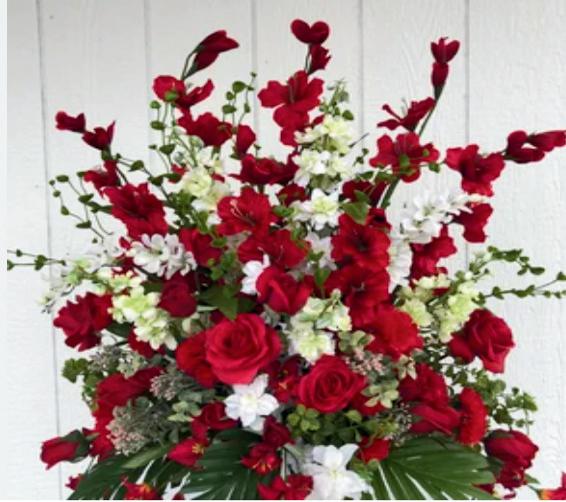

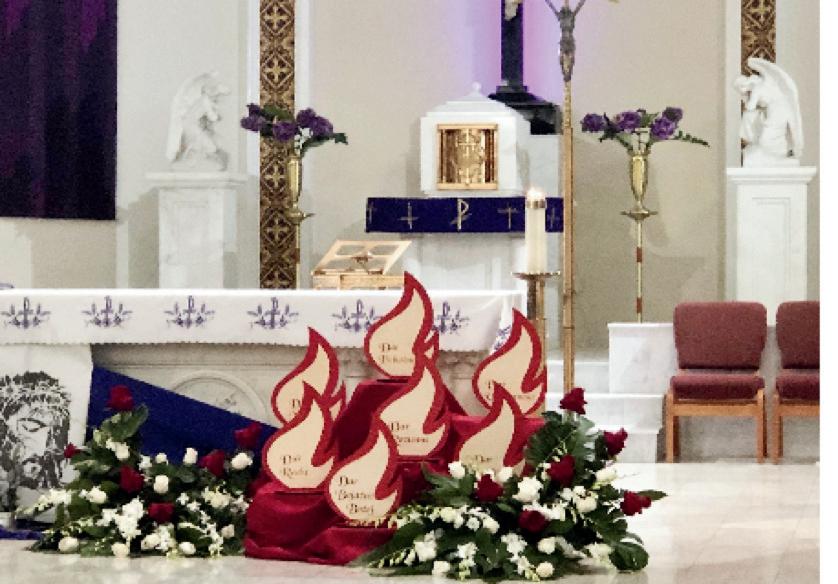

FLOWERS FOR FIRST HOLY COMMUNIONS
A child’s First Holy Communion is a day in the Catholic religion when they can receive the first time Holy Communion. White lilies, especially Madonna Lilies as they represent purity and the Blessed Mother Mary, are some of the most popular flowers for a First Holy Communion. In addition, baby’s breath, a symbol of everlasting love which is interpreted as God’s everlasting love for his children, pink roses, symbolizing grace, peach roses, symbolizing modesty, daisies, symbolizing innocence, and honeysuckle, symbolizing devotion, are other wonderful choices for First Holy Communion floral arrangement




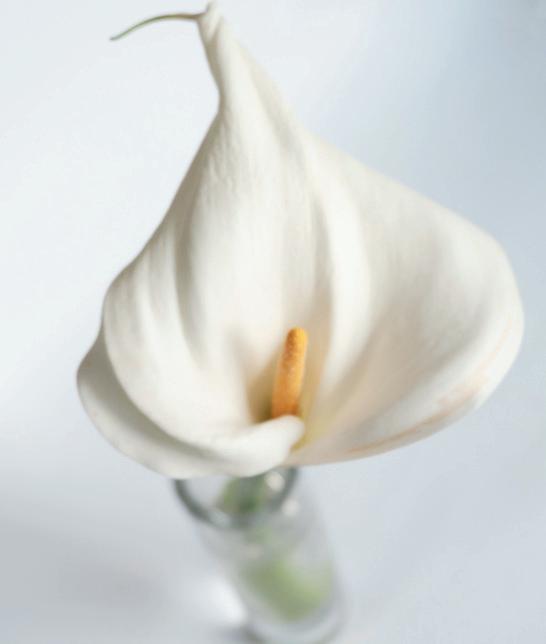




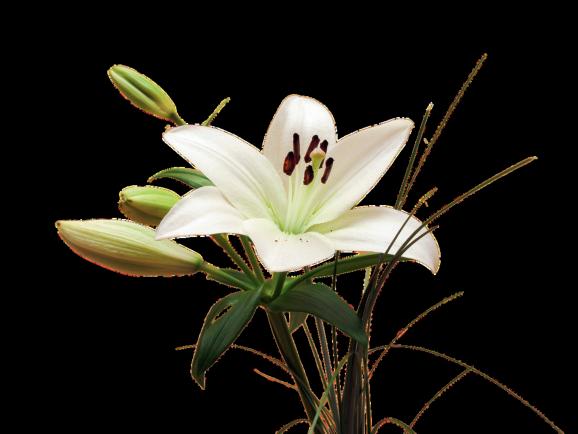 INAPPROPRIATE USE OF FLORAL DECORATION
INAPPROPRIATE USE OF FLORAL DECORATION

SYMBOLS BEHIND DIFFERENT KIND OF FLOWERS
DAISY FLOWERS
Daisies represent the innocence of the Christ child, the innocence, loyalty, and gentleness.






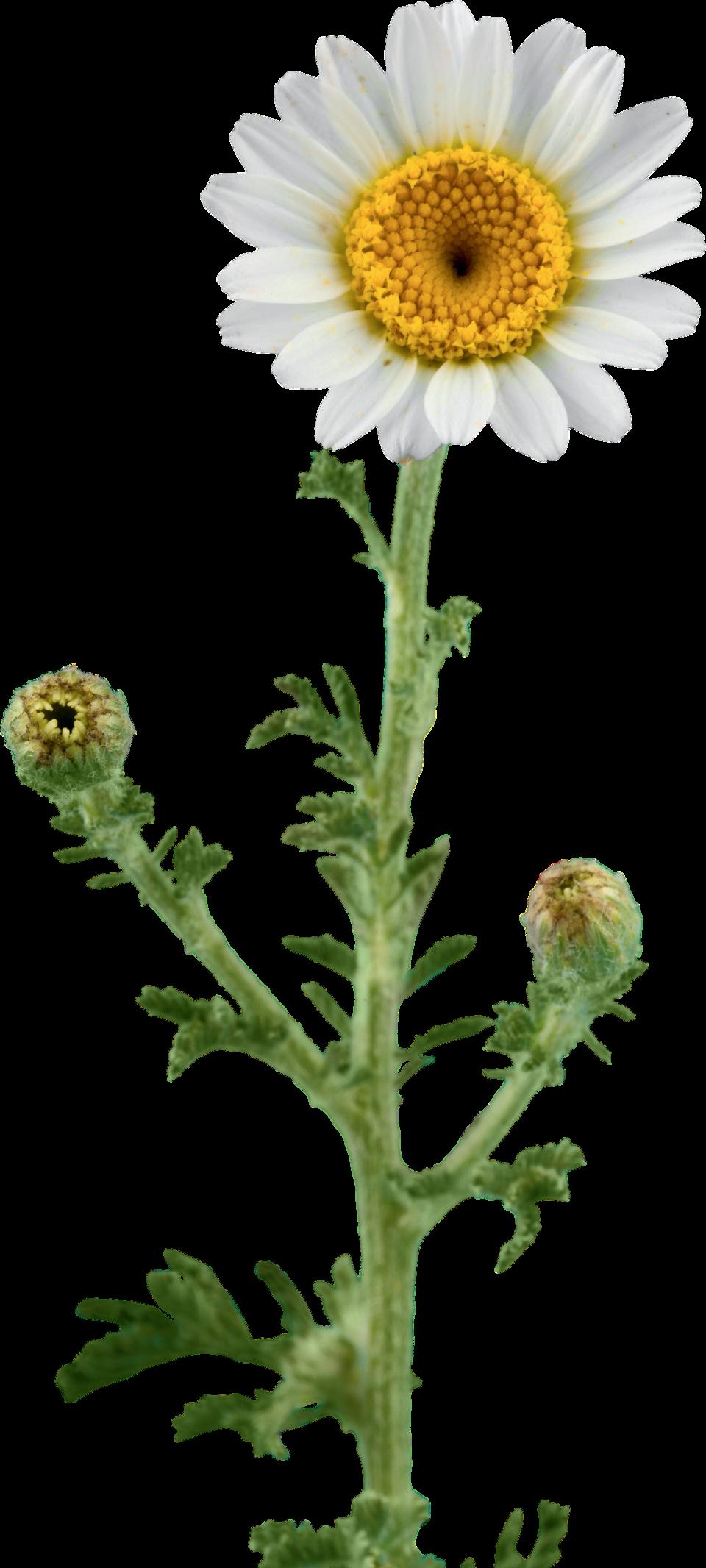
WHITE LILY- JESUS WHITE LILY-MARY
The white lily, also known as the Easter lily, is a representation of Christ's purity and divinity. This flower is displayed in many churches during Easter holiday, because it is believed that lilies, sometimes called "white-robed apostles of hope," sprang from the ground where drops of Jesus' sweat fell to the ground during his final agony. The white lily also serves as a symbol of Christ's resurrection, because it rises from a single bulb, which represents Christ rising from the tomb.



The lily is a symbol of purity and has become the flower of the Virgin. It is a symbol of the Immaculate Conception, and Annunciation.
In addition, the lily is a symbol of chastity, so St. Joseph and many other saints appear with this flower. It is believed that visitors to the Virgin Mary's tomb found only a bed of lilies because her body went straight to heaven during the first three days after her death. Another legend says that lilies grew from Eve's tears of re the Garden of Eden.


BABY'S BREATH FLOWER
While baby's breath flowers symbolize the presence of the Holy Spirit.







IRIS
This flower represents the Blessed Virgin. Its name, meaning “sword lily,” is an allusion to the sorrow of Our Lady at the Passion. Faith, wisdom, and hope find expression in the iris.


HYACINTH
A symbol of prudence, peace of mind, and the desire for heaven. hyacinths convey a message of peace of mind.


PASSION FLOWER

The passionflower is associated with Christ, because several parts of this flower represent different aspects of the crucifixion. For example, the spiraled tendrils in the center of the flower symbolize the lash marks Christ received while being whipped prior to the crucifixion. The central flower column is a symbol of the whip that was used to lash Christ, and the 72 radial filaments represent the crown of thorns. Also, the top three stigmas of the flower symbolize the three nails used during the crucifixion, and the lower five anthers symbolize the five wounds that resulted from the nails.
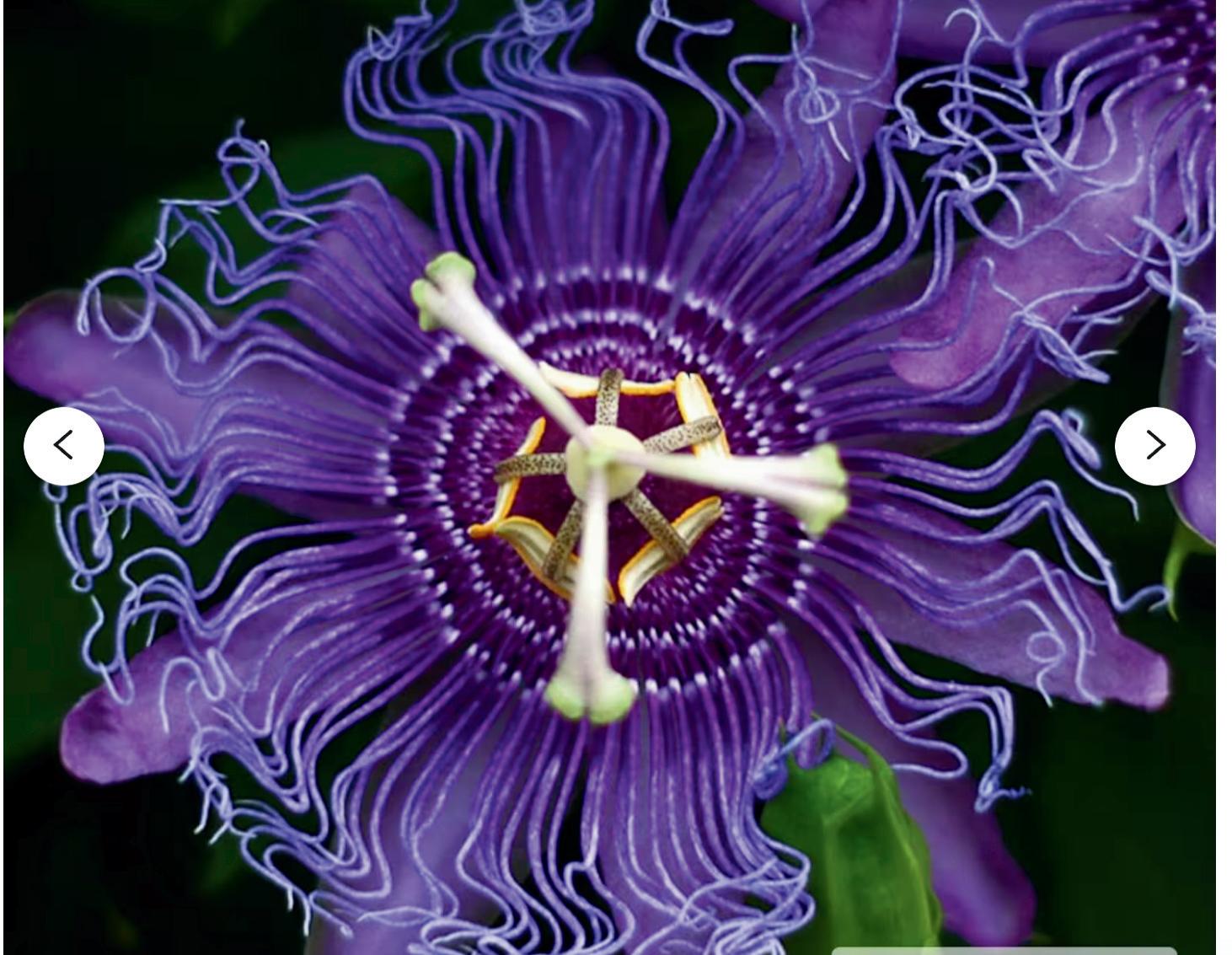
ROSE (RED ROSE)
The red rose is a symbol of martyrdom, red represents the blood Jesus shed for the forgiveness of sins. The five petals of the rose symbolize all five of Christ’s wounds from the crucifixion. Typically, a white rose represents Christ’s purity, and a red rose represents Christ’s sacrificial blood. When a white and red rose are placed together, the arrangement represents Christ's crucifixion and resurrection.


The white rose of purity. The Virgin is often called “the Rose without thorns.” A garland of roses is an allusion to the rosary, and wreaths of roses symbolize heavenly joy
THE WHITE ROSE OF PURITY CHRISTMAS ROSE

The Christmas Rose is associated with Jesus’ birth and the story of a young shepherdess named Madelon. Madelon was saddened that she did not have a gift to offer baby Jesus and, as she wept, an angel appeared. While consoling Madelon, the angel swept away snow to reveal a collection of white flowers with pink tips. This cluster of flowers would be Madelon’s gift to the newborn and thus, the tradition of the Christmas Rose was born.




TULIPS FLOWERS
White tulips stand for forgiveness, while the purple represent royalty. Both meanings fit well with the religious themes of Easter, as do the meanings of love, belief and passion associated with the blooms.


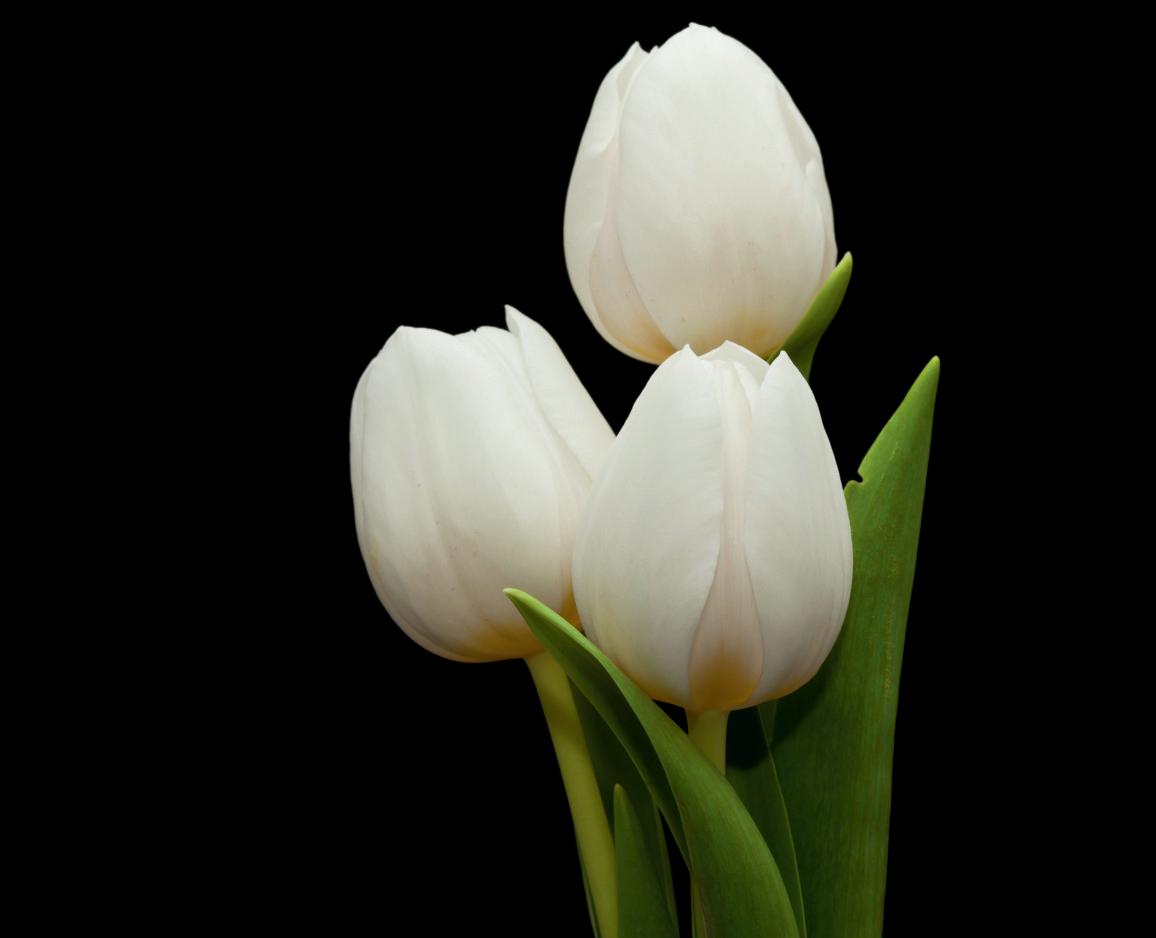
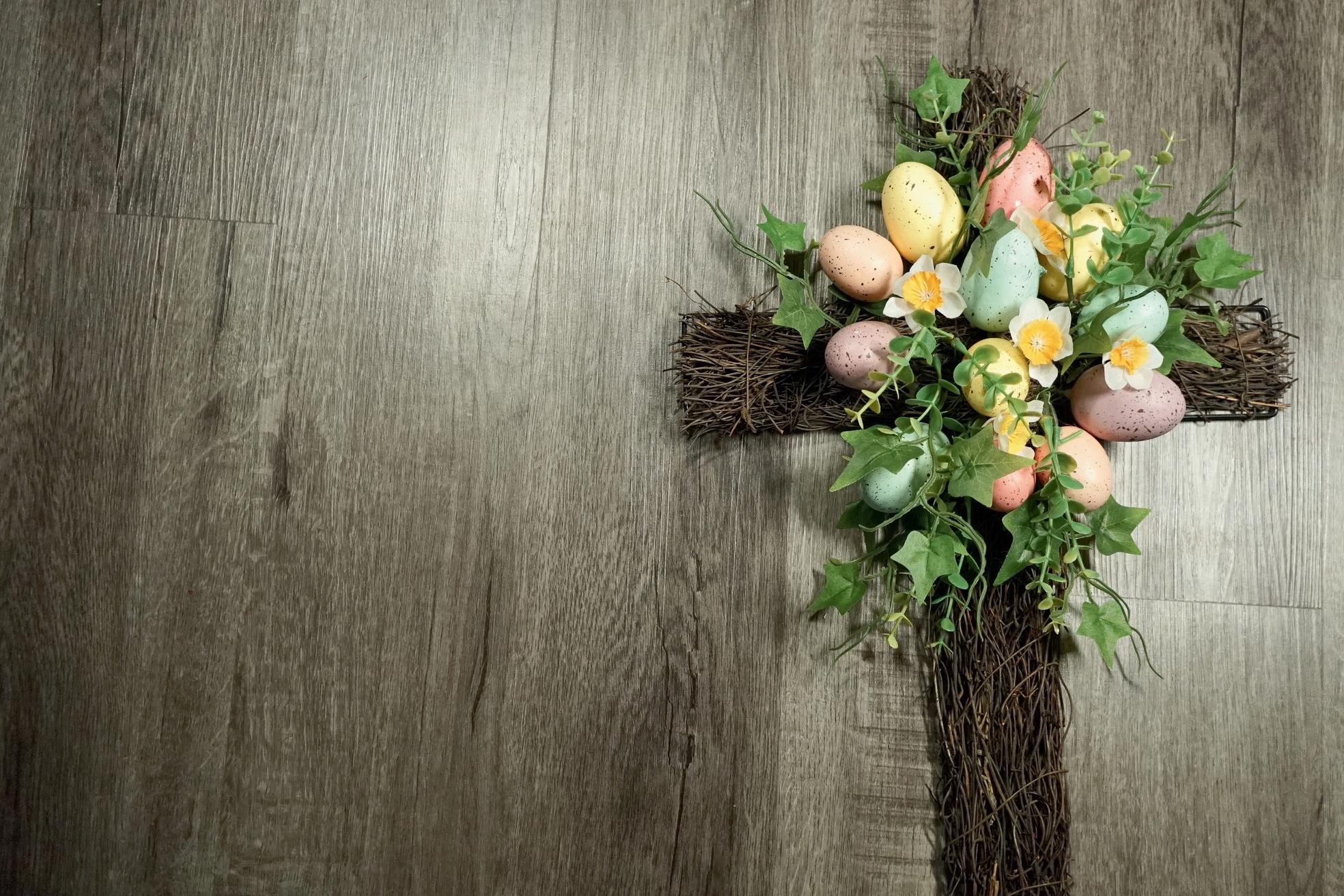
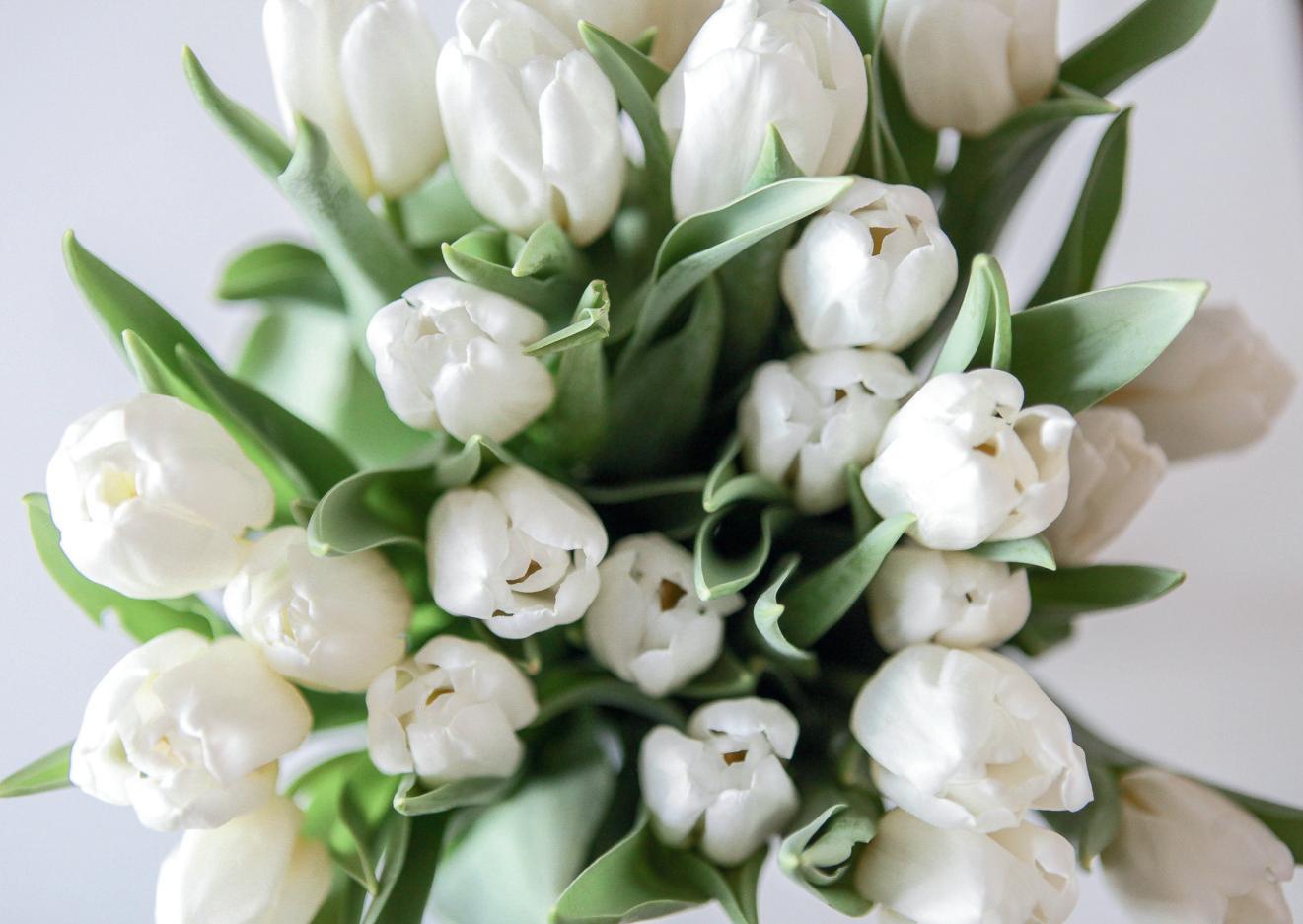

HOLLY
Regarded as a symbol of Christ’s Crown of Thorns and Passion
POINSETTIA FLOWERS

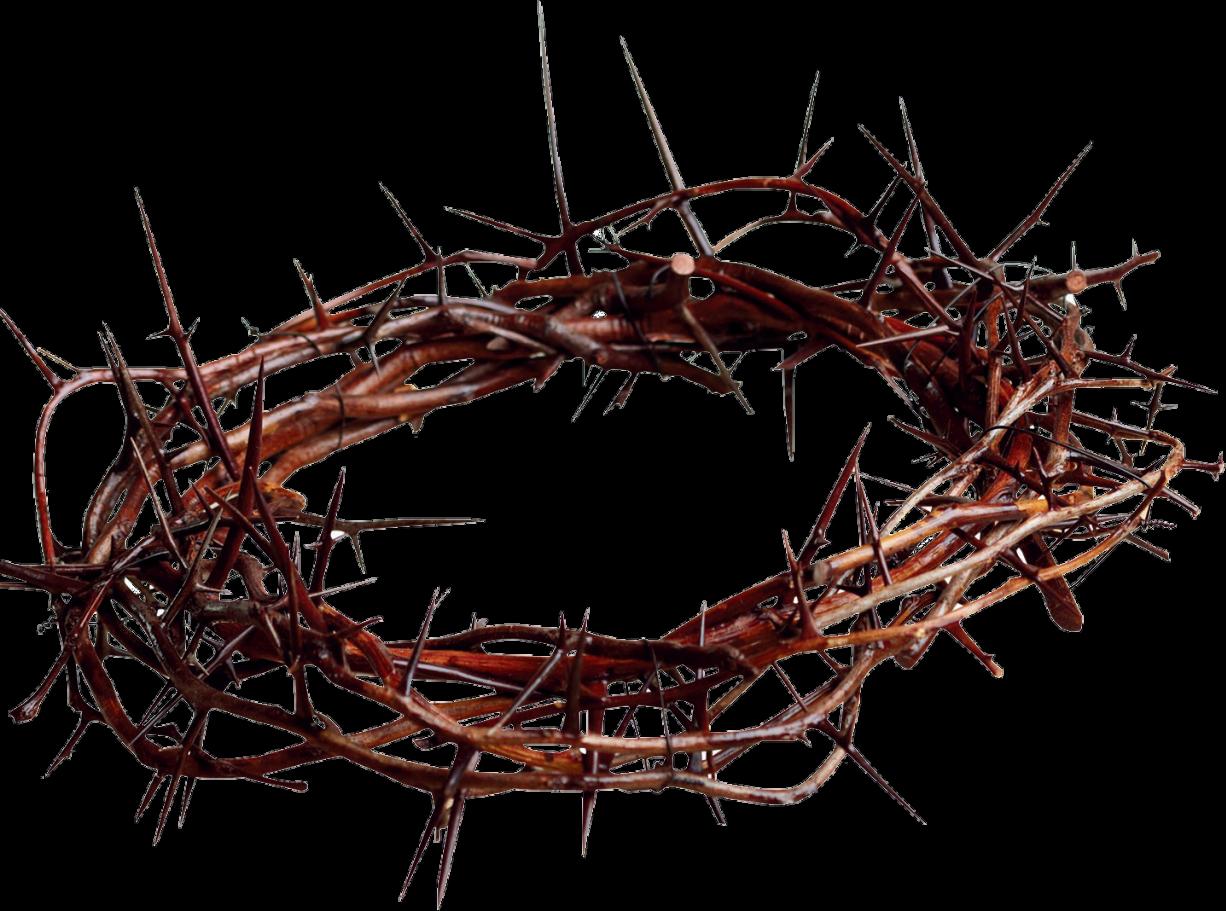
Poinsettias are synonymous with the Christmas season. The vibrant leaves of the Poinsettia are known as bracts and come in shades of red, white, and pink. Most people believe the star shape of the bract represents the Star of Bethlehem which guided the Wise Men to Jesus. A Poinsettia’s red leaves signify the blood of Christ, and its white leaves symbolize the purity of the Son of God.
Another legend of the Poinsettia tells the story of a young Mexican girl who brought Poinsettias to a church altar on Christmas Eve. She was too poor to buy a gift and felt ashamed of her plants. She placed her bouquet of weeds at the foot of the church’s nativity scene, when suddenly the bracts of the Poinsettia began to bloom, revealing a bright red shade. The congregation considered this a miracle and from then on referred Poinsettias as "Flores de Noche Buena" or "Flowers of the Holy Night".


MISTLETOE FLOWERS
The story of this traditional Christmas flower dates back to the druids who used this plant during their winter celebrations. Because of its ability to stay green for periods of time without being rooted, the druids believed Mistletoe possessed magical powers that brought good luck and warded off evil spirits.

BLOOD OF JESUSFLOWERS

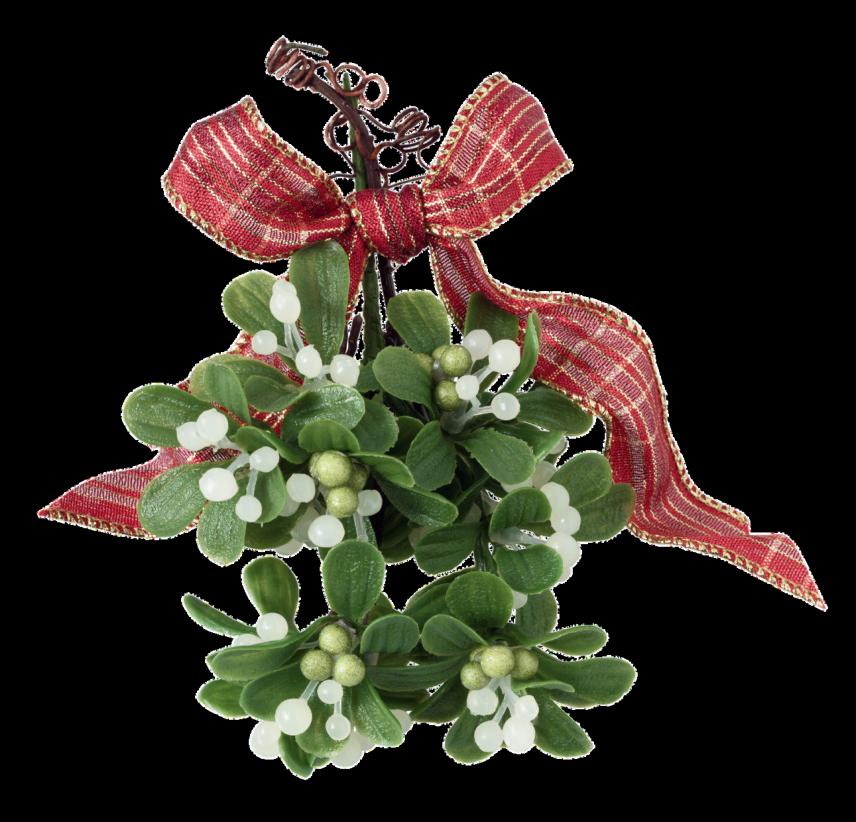

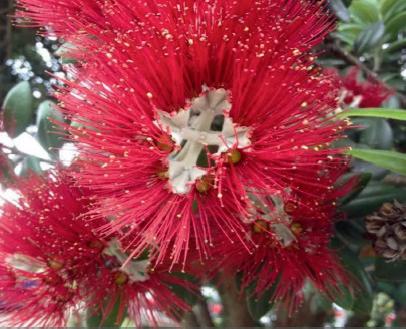
FERN
This forest plant symbolizes solitary humility, frankness, and sincerity.
DAFFODIL FLOWERS
A daffodil flower represents eternal life in Christianity. One reason for this is that daffodils are perennial flowers, so they appear year after year. In addition, daffodils are one of the first flowers to appear in spring, which is representative of rebirth, a process that some Christians believe happens during the afterlife. There is also a belief that daffodils bloomed once Christ rose from the tomb, so this flower serves as a reminder of the resurrection
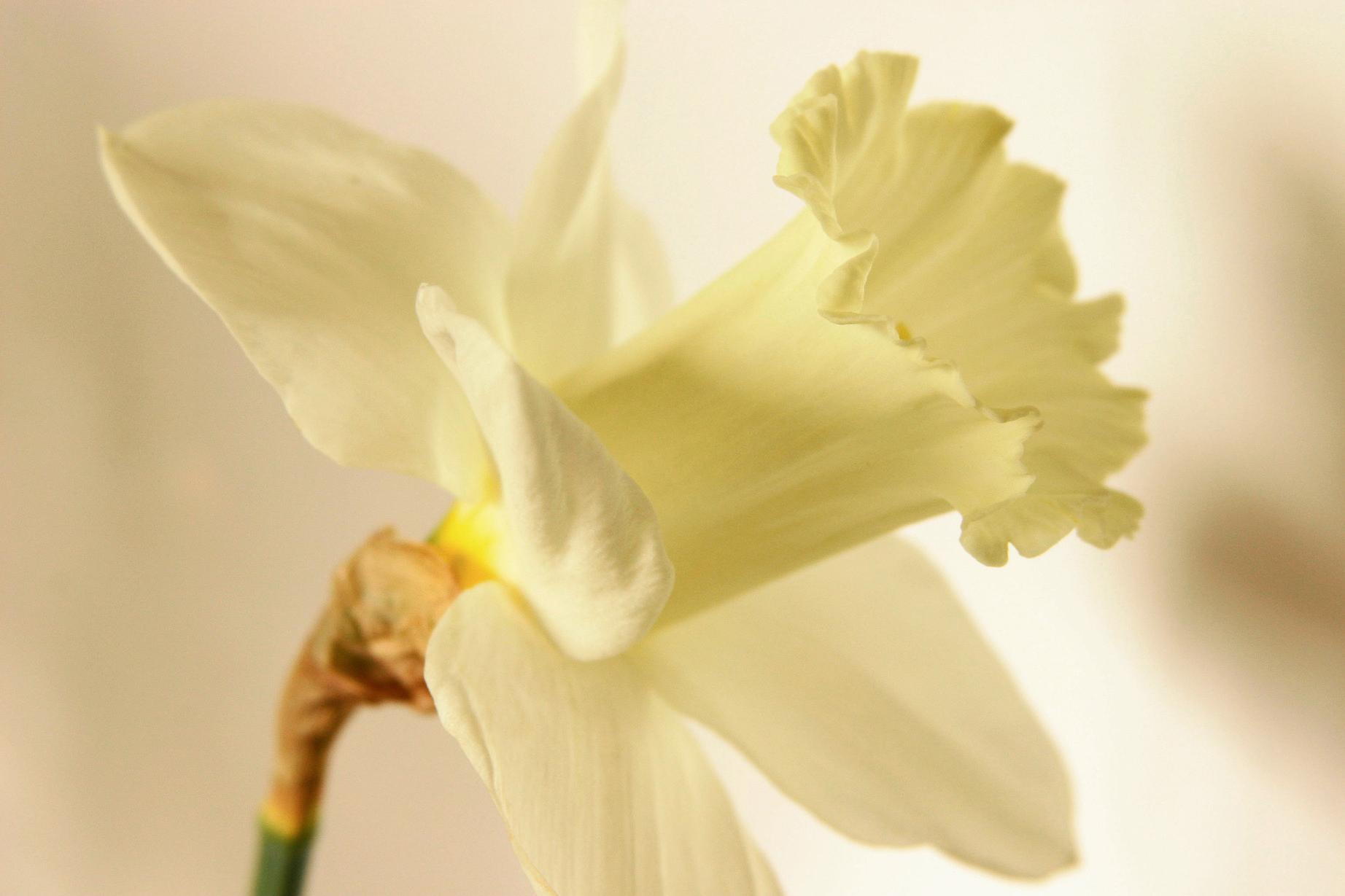
AZALEAS FLOWERS

The showy blooms of azaleas represent temperance, or self-control. The plant also symbolizes womanhood, linking it to the Virgin Mary at Easter, while the colors of the flowers carry their own symbolism, with white standing for purity, purple for royalty and pink for joy.



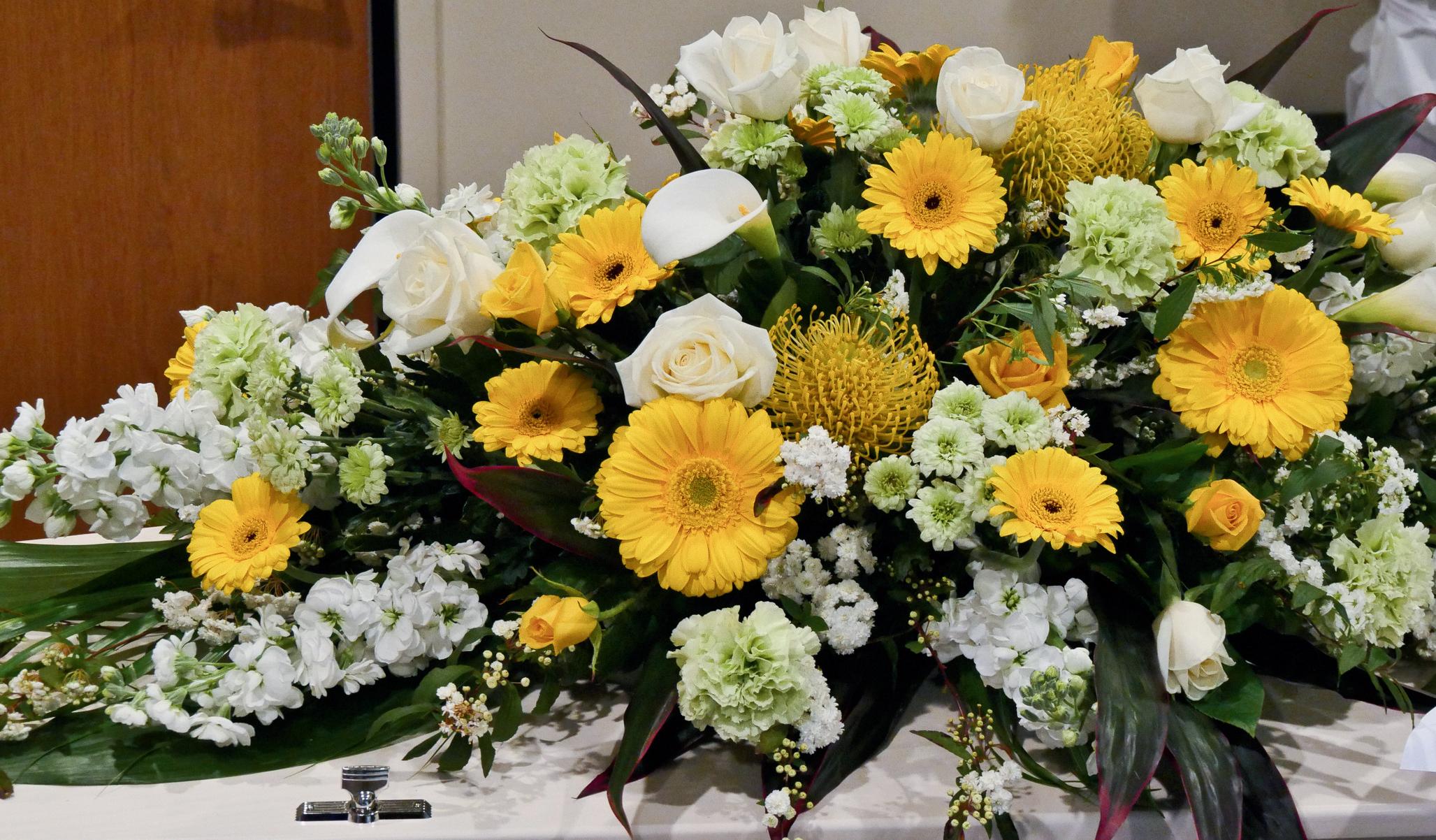







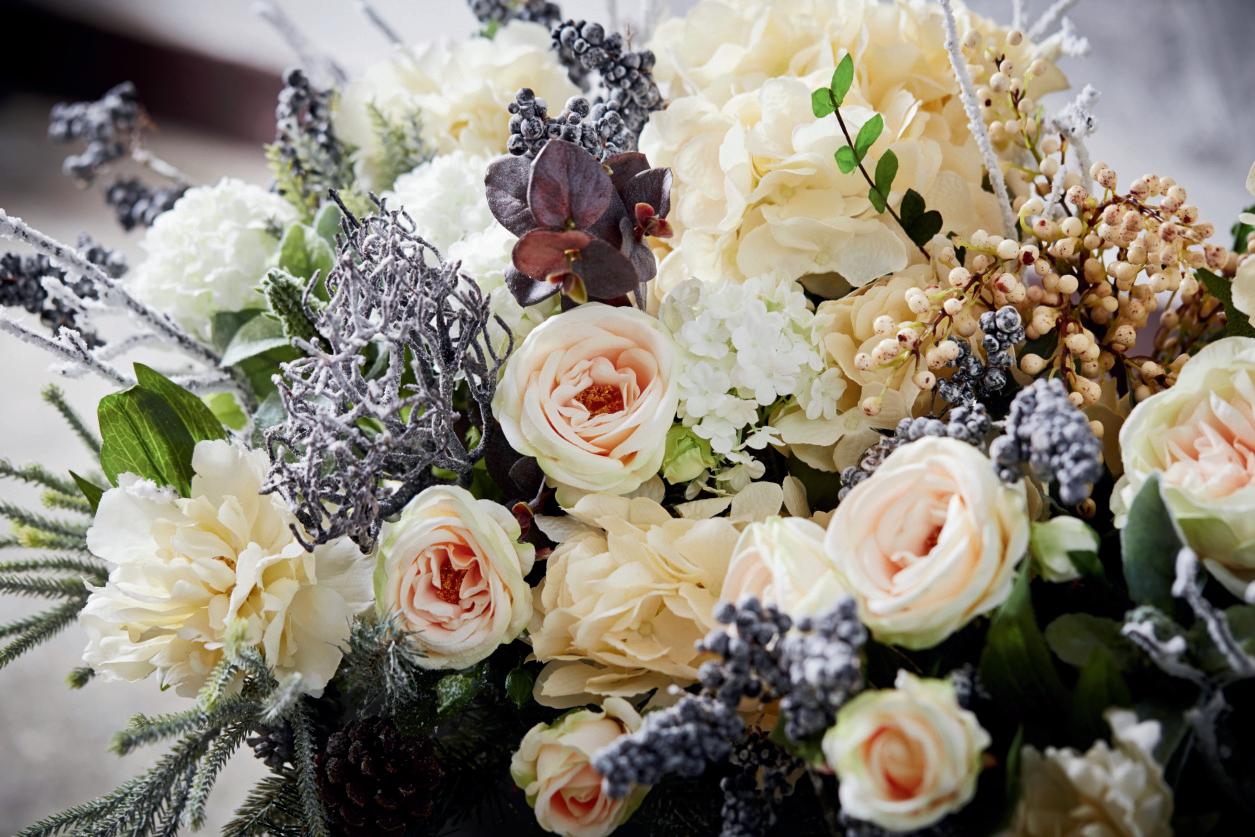
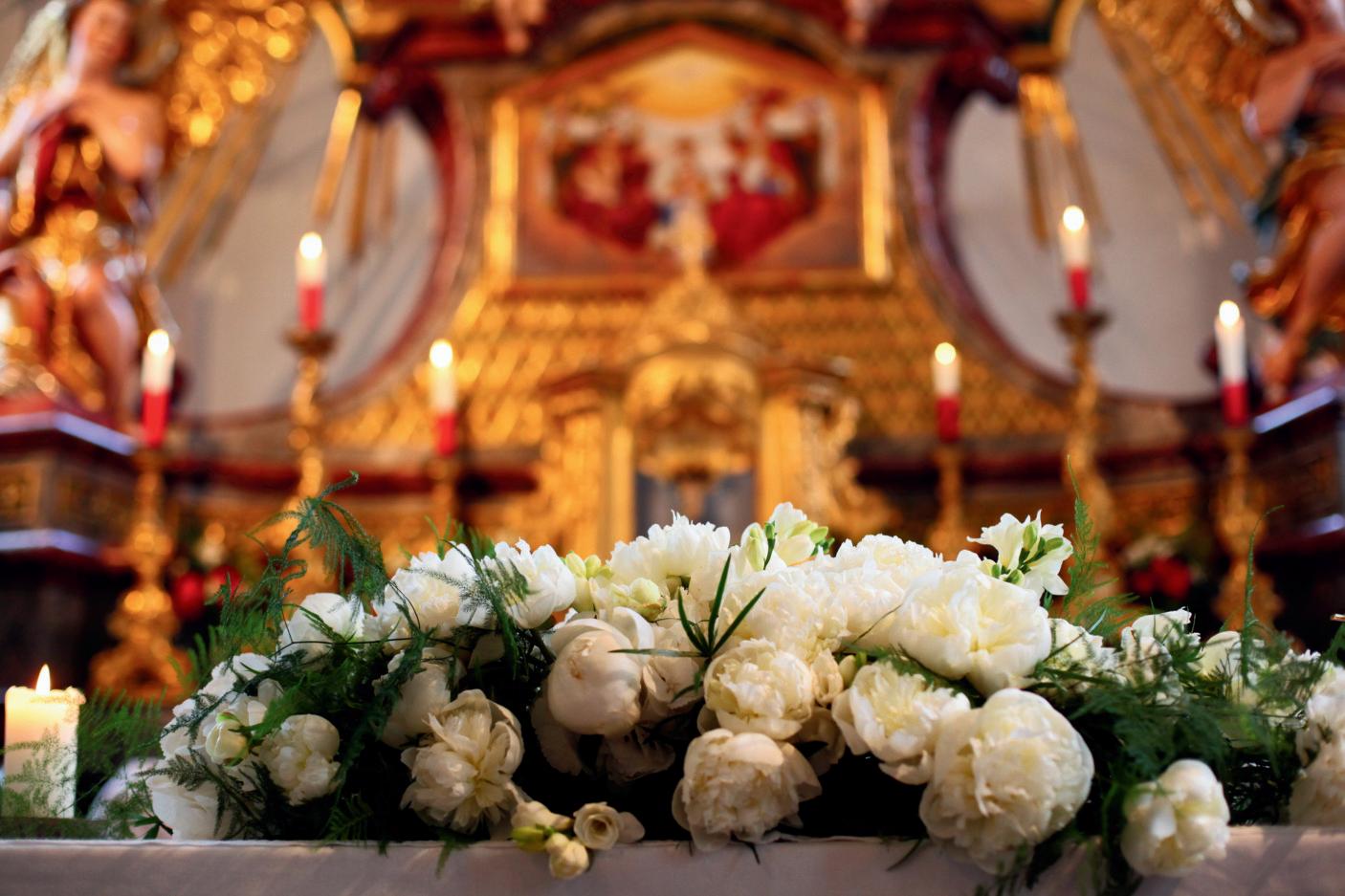








 By Seasons & Significances
By Seasons & Significances








































































































 INAPPROPRIATE USE OF FLORAL DECORATION
INAPPROPRIATE USE OF FLORAL DECORATION

































































